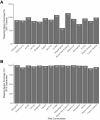Pilot introduction of long-lasting insecticidal nets and hammock nets in the indigenous Comarca of Guna Yala, Panama
- PMID: 39696566
- PMCID: PMC11657707
- DOI: 10.1186/s12936-024-05208-2
Pilot introduction of long-lasting insecticidal nets and hammock nets in the indigenous Comarca of Guna Yala, Panama
Abstract
Background: After almost 70 years of using indoor residual spraying (IRS) as the primary intervention for malaria vector control, the Republic of Panama wanted to evaluate the operational feasibility and acceptability of distributing long-lasting insecticidal hammock nets (LLIHNs) and long-lasting insecticidal nets (LLINs) in the country.
Methods: A pilot study conducted in 2019 distributed LLINs and LLIHNs to cover all sleeping spaces in 15 high burden localities of the indigenous Comarca of Guna Yala and measured retention, coverage, use and physical deterioration, washing and drying practices, as well as people's satisfaction with product characteristics post-distribution.
Results: Overall, 89.9% of enumerated sleeping spaces were covered during the campaign. Monitoring post-distribution showed that 82.7% of the population received messages about the campaign before it happened and 92.4% claimed to know the purpose of the net and how to care for and repair it. Mild adverse reactions, specifically skin irritation associated with the insecticide in LLINs and LLIHNs, were reported by 38.4% of households. Two years after distribution, 86.3% of the LLIHN/LLINs were retained. Use was very high right after distribution (85%) but decreased to 57% six months after distribution and to 38% two years after distribution. The main reason for not using the LLIHN/LLINs was the reported absence of mosquitoes. Two years post-distribution, LLIHN/LLINs were preserved in good physical condition (4% torn), very few were washed with insecticide-damaging products (chlorine or detergent) (9%) or dried under the sun (15%), and LLIHN/LLINs were washed on average less than once every two months. The average number of people per sleeping space was 1.34.
Conclusion: Although the distribution of LLIHN/LLINs was operationally feasible and LLIHN/LLINs were initially well-accepted and cared for by these communities, use decreased drastically over the two years of follow up after distribution. Hence, should there be future LLIHN/LLIN distributions in this area, sufficient resources and efforts need to be allocated to promoting LLIHN/LLIN use. Further investigation into the reasons for low LLIHN/LLIN use are needed to guide such efforts.
Keywords: Indigenous populations; Long-lasting insecticidal hammock nets (LLIHN); Long-lasting insecticidal nets (LLIN); Malaria.
© 2024. The Author(s).
Conflict of interest statement
Declarations. Ethics approval and consent to participants: This pilot introduction of LLIHN/LLIN was led by the vector-borne disease department of the Ministry of Health and implemented as programmatic data collection and program evaluation. Participants’ verbal consent was obtained before the household surveys. The data collected during this pilot introduction of LLIHN/LLIN is safely stored in the Ministry of Health official malaria data repository and is only accessible to the Ministry of Health staff and certain staff from the Clinton Health Access Initiative that supported this project. Competing interests: The authors declare no competing interests.
Figures





Similar articles
-
Insights from LLIN post-distribution monitoring surveys in the malaria transmission foci of the Dominican Republic: implications for quantification and distribution strategies.Malar J. 2025 Aug 21;24(1):272. doi: 10.1186/s12936-025-05406-6. Malar J. 2025. PMID: 40842007 Free PMC article.
-
Comparative field evaluation of combinations of long-lasting insecticide treated nets and indoor residual spraying, relative to either method alone, for malaria prevention in an area where the main vector is Anopheles arabiensis.Parasit Vectors. 2013 Feb 22;6:46. doi: 10.1186/1756-3305-6-46. Parasit Vectors. 2013. PMID: 23433393 Free PMC article.
-
Do long-lasting insecticidal nets retain their efficacy after three years of usage in Afghanistan? Findings from a study on survivorship, physical integrity, insecticidal activity and wash resistance.Malar J. 2025 Apr 15;24(1):121. doi: 10.1186/s12936-025-05346-1. Malar J. 2025. PMID: 40234878 Free PMC article.
-
Piperonyl butoxide (PBO) combined with pyrethroids in insecticide-treated nets to prevent malaria in Africa.Cochrane Database Syst Rev. 2018 Nov 29;11(11):CD012776. doi: 10.1002/14651858.CD012776.pub2. Cochrane Database Syst Rev. 2018. Update in: Cochrane Database Syst Rev. 2021 May 24;5:CD012776. doi: 10.1002/14651858.CD012776.pub3. PMID: 30488945 Free PMC article. Updated.
-
Piperonyl butoxide (PBO) combined with pyrethroids in insecticide-treated nets to prevent malaria in Africa.Cochrane Database Syst Rev. 2021 May 24;5(5):CD012776. doi: 10.1002/14651858.CD012776.pub3. Cochrane Database Syst Rev. 2021. PMID: 34027998 Free PMC article.
Cited by
-
Genetic Diversity of Potential Drug Resistance Markers in Plasmodium vivax Isolates from Panama, Mesoamerica.Pathogens. 2025 Feb 27;14(3):231. doi: 10.3390/pathogens14030231. Pathogens. 2025. PMID: 40137716 Free PMC article.
References
-
- Ministerio de Salud de la República de Panama. Boletines Semanales de Malaria. https://www.minsa.gob.pa/informacion-salud/malaria-1. Accessed 27 May 2024.
-
- Ministerio de Salud de la República de Panama. Plan Estratégico de Eliminación de la Malaria (PEEM) en Panama, 2018–2022. 2018.
-
- Interamerican Development Bank. Panama: Regional Malaria Elimination Intitative (RMEI) in Mesoamerica and Dominican Republic. https://www.iadb.org/en/whats-our-impact/PN-G1007. Accessed 6 Jun 2024.
-
- Organización Panamericana de la Salud. Manual para la estratificación según el riesgo de malaria y la eliminación de focos de transmissión. Washington; 2020.
-
- Magris M, Rubio-Palis Y, Alexander N, Ruiz B, Galván N, Frias D, et al. Community-randomized trial of lambdacyhalothrin-treated hammock nets for malaria control in Yanomami communities in the Amazon region of Venezuela. Trop Med Int Health. 2007;12:392–403. - PubMed
MeSH terms
Substances
Grants and funding
LinkOut - more resources
Full Text Sources
Medical

